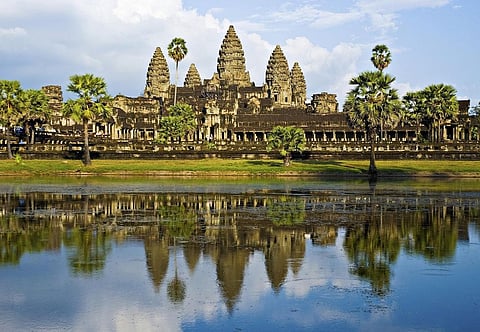
- Home
- NG Hindi
- India
- World
- Politics
- Sex & Relationships
- Entertainment
- Culture
- Lifestyle
- Economy
- Sports
- Sp. Coverage
- Misc.
- NewsGram Exclusive
- Jobs / Internships

In this article, we will discuss about the "History behind Angkor Wat Hindu Temple", which is the world's largest Hindu temple located in "Cambodia" – southeast asian nation.
Angkor Wat: Lost in the woods for over 400 years, the discovery of Angkor Wat, the largest Hindu monument literally shocked the world. Angkor Wat, Cambodia's famous temple is a place full of still unexplored history, myth and legend.
How did the civilization collapse? Hard evidence points towards the failure of Water management system. But the debate is still going on. Surprisingly the temple was never abandoned, a group of Buddhist monks stayed there and aggressively worked to save the religious place for over centuries. This also gradually resulted in the transformation of a Hindu Temple into a Buddhist temple.
In 1992, Angkor Wat was listed as World Heritage site in danger. Subsequently, it was removed from the endangered list, to be included as a World Heritage site. France, Japan and China have helped in temple restoration project. India's archaeological department had also chipped in the 1980s. Currently, German Apsara Conservation project is in place to save the sculptures carved on the stones. Due to the continuous efforts of UNESCO and other nations Angkor Wat has become a major tourist spot with over 2 million people visiting this place every year. (Inputs from Aakash Sinha)(image-Unesco)
